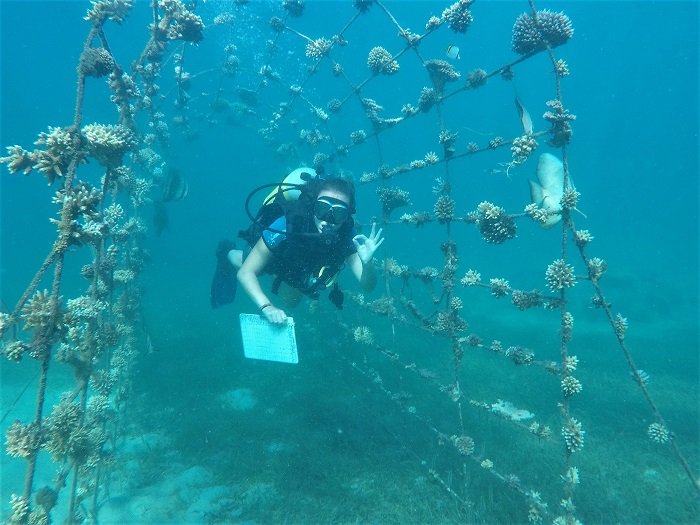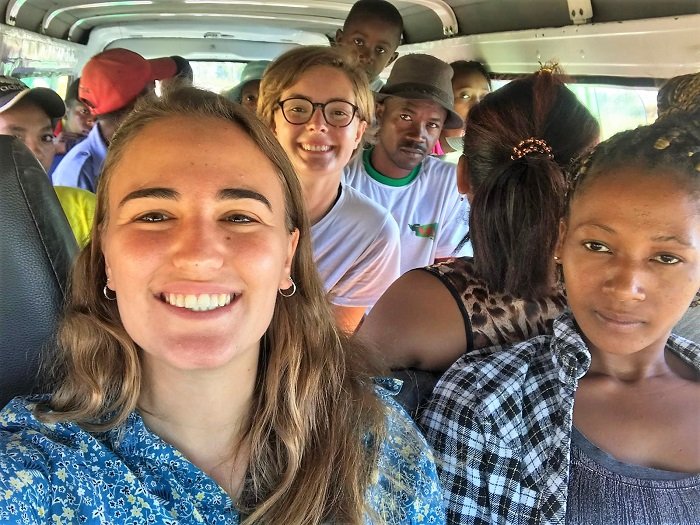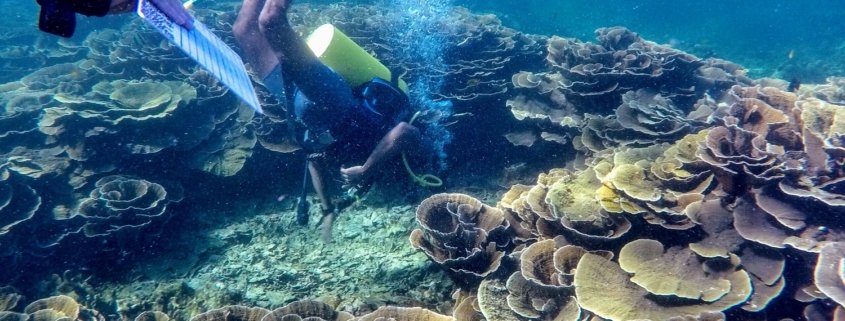“What a wonderful way to start the new decade!”
Here is the second monthly blog of life at Reef Doctor from our Research Assistant & Divemaster Intern, Esmee Tobin.
“It’s a new year, and a new decade, and what a way to spend it, in Madagascar! Though only two months have passed, I feel like I have spent forever here. I’ve learnt loads more things, and I hope I can share some of that with you here!
Firstly, I’ve finished my Advanced Open Water! This was comprised of a bunch of fun dives, from drift diving with the current, to a night dive with only torches to light our way, it was a fun opportunity to go on some dives I never normally would have gone on. My favourite was definitely the deep dive, where we went to 25 meters. I was in charge of planning this dive, looking over maps and calculating surface breathing to see how long we could spend at specific depths. It was a cool learning experience, and one that I need to get used to. One of the responsibilities of us interns is planning and leading dives. And even though we aren’t qualified to rescue diver, we can still take over most of the responsibilities as long as a dive officer is watching over us. It’s a nice way to get used to being a dive leader without the stress of being chucked into doing it straight away.

Secondly, we’ve been doing some new science projects! We have now started to do coral cleans at least once a week. Around one of our closest dive sites, a marine protected area called Rose Garden, Reef Doctor has built a variety of rebar structures to grow coral on, the most notable ones being the nursery table, and swim through. These structures are tourist attractions for divers from the local hotels, and it is our job to maintain them. As the water in the bay is warming up for the summer months, algae is thriving. This means that the swim through and other such sites are becoming covered in more algae than coral. A coral clean dive is comprised of floating around, with toothbrushes in hands scrubbing away at the metal and the base of the corals, making sure that as much is cleaned off as possible, without damaging the coral. It’s a really peaceful dive to go on, and a good way to practice your buoyancy control.

We have also started monitoring the health of the coral itself, with many bleaching surveys taking place in response to the summer heatwave. In fact, the water right now is 30-32 degrees, more like a bath than an ocean! Coral bleaching occurs when the algae within a coral, that helps it photosynthesise and gain energy from the sun, overheats and dies, leaving coral appearing pale. Without the extra sustenance, most corals proceed to die. Though this allows hardier coral to thrive, it is still good to monitor what is surviving and what isn’t to keep track for future bleaching events. To monitor the bleaching of the coral, we must first identify the coral on a species level, a rather complicated task, but with the help of a couple of waterproof guides, I feel like I am getting the hang of it! The process itself is easy, simply set down a quadrat randomly on the reef and write down the different types of coral that you can see within that square, mark whether it is alive, pale or bleached, and then calculate the percentage cover of the coral within the quadrat, along with soft coral and algae. Then rinse and repeat as many times as possible!
There are so many new science projects starting up in this new year, along with all of the dive training that I shall soon be packing in, as I draw nearer to getting my Divemaster. Each week there is at least on new thing to do, from maintaining algae farms, to visiting our local mangrove project, Honko, there are always new learning experiences and chances to find out about how Reef Doctor is helping the local communities in addition to the local reefs. What a wonderful way to start the new decade!”







